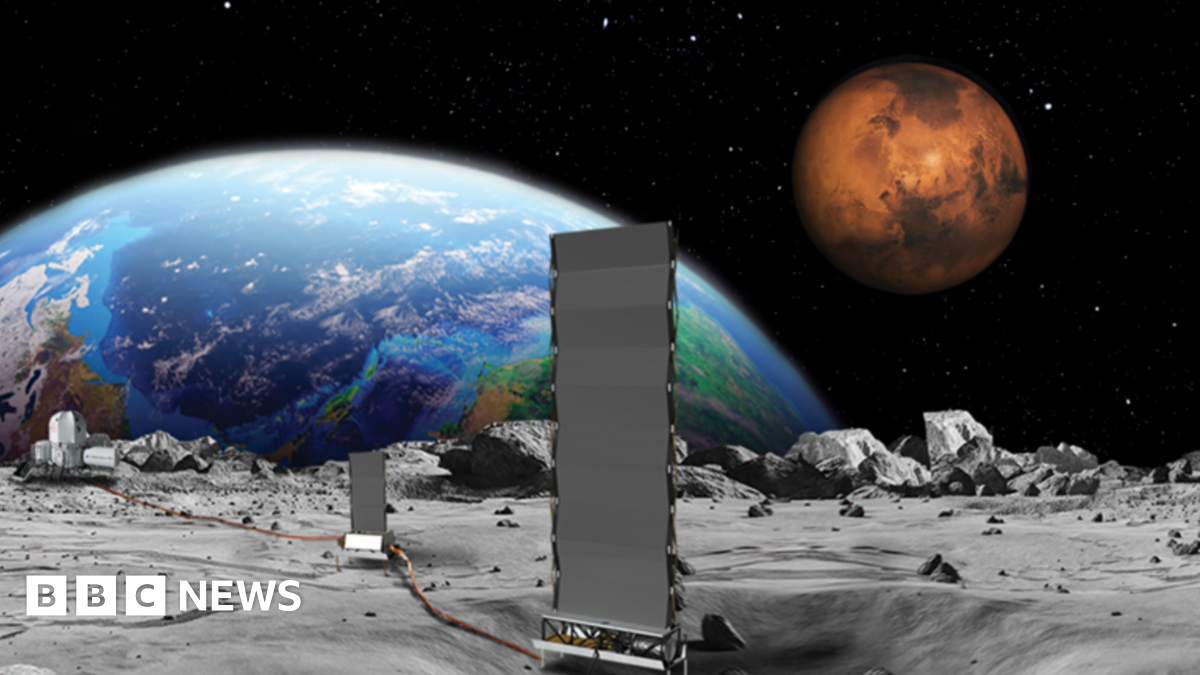NASA's Moon Nuclear Reactor Plan: A 2030 Target?

Welcome to your ultimate source for breaking news, trending updates, and in-depth stories from around the world. Whether it's politics, technology, entertainment, sports, or lifestyle, we bring you real-time updates that keep you informed and ahead of the curve.
Our team works tirelessly to ensure you never miss a moment. From the latest developments in global events to the most talked-about topics on social media, our news platform is designed to deliver accurate and timely information, all in one place.
Stay in the know and join thousands of readers who trust us for reliable, up-to-date content. Explore our expertly curated articles and dive deeper into the stories that matter to you. Visit Best Website now and be part of the conversation. Don't miss out on the headlines that shape our world!
Table of Contents
NASA's Moon Nuclear Reactor Plan: A 2030 Target? Ambitious Goal Faces Significant Hurdles
NASA's audacious plan to establish a nuclear fission reactor on the Moon by 2030 has captured the world's attention. This ambitious project, part of a broader Artemis program aiming for sustained lunar presence, promises to revolutionize space exploration by providing a reliable, high-power energy source crucial for long-duration missions and potential lunar bases. But the path to a lunar nuclear reactor is paved with significant technological and logistical challenges.
Why a Nuclear Reactor on the Moon?
The current reliance on solar power for lunar operations presents limitations. Solar energy is intermittent, unreliable during lunar nights, and insufficient to power energy-intensive operations like resource extraction, advanced scientific experiments, and life support systems for a sizeable lunar habitat. A nuclear fission reactor offers a continuous, high-power solution, crucial for establishing a permanent human presence on the Moon. This technology is key to unlocking the Moon's potential as a stepping stone for future missions to Mars and beyond.
The Kilopower Project and Beyond:
NASA's Kilopower project, a successful test of a small fission reactor, laid the groundwork for this ambitious lunar endeavor. This technology demonstrated the feasibility of generating reliable power in the harsh conditions of space. However, scaling up Kilopower's design to meet the power demands of a lunar base presents a considerable engineering challenge. The project requires significant advancements in areas like:
- Radiation Shielding: Protecting astronauts and equipment from the harmful radiation emitted by a nuclear reactor is paramount. Developing lightweight and effective shielding materials is crucial.
- Launch and Deployment: Transporting a nuclear reactor to the Moon safely and deploying it on the lunar surface requires robust and reliable launch systems and sophisticated robotics.
- Fuel Supply and Management: Securing a consistent supply of nuclear fuel for the lunar reactor and developing efficient fuel management systems is essential for long-term operation.
- International Collaboration: The sheer scale and complexity of this project necessitate international collaboration, potentially involving partnerships with private space companies and other space agencies.
2030: A Realistic Timeline?
While NASA aims for a 2030 deployment, many experts express skepticism about the feasibility of this ambitious timeline. The technological hurdles, budgetary constraints, and the inherent complexities of operating a nuclear reactor in a space environment pose significant challenges. Delays are likely, and a more realistic timeframe might extend beyond the initial target.
Ethical and Environmental Considerations:
The deployment of a nuclear reactor on the Moon also raises significant ethical and environmental considerations. The potential for accidents and the long-term impact of nuclear waste on the lunar environment require careful consideration and stringent safety protocols. Transparent communication and international cooperation are crucial to addressing these concerns.
The Future of Lunar Exploration:
Despite the challenges, the potential benefits of a lunar nuclear reactor are immense. It could unlock unprecedented opportunities for scientific discovery, resource utilization, and the eventual establishment of a sustainable human presence on the Moon. The success of this project will be a pivotal moment in the history of space exploration, shaping the future of humanity's reach beyond Earth. Further research and development, coupled with international collaboration, are essential for realizing this ambitious goal. While the 2030 target might be optimistic, the journey towards a nuclear-powered lunar base is underway, marking a new era of space exploration.

Thank you for visiting our website, your trusted source for the latest updates and in-depth coverage on NASA's Moon Nuclear Reactor Plan: A 2030 Target?. We're committed to keeping you informed with timely and accurate information to meet your curiosity and needs.
If you have any questions, suggestions, or feedback, we'd love to hear from you. Your insights are valuable to us and help us improve to serve you better. Feel free to reach out through our contact page.
Don't forget to bookmark our website and check back regularly for the latest headlines and trending topics. See you next time, and thank you for being part of our growing community!
Featured Posts
-
 Premium Bonds 100m In Unclaimed Prizes Could You Be A Winner
Aug 07, 2025
Premium Bonds 100m In Unclaimed Prizes Could You Be A Winner
Aug 07, 2025 -
 Thomas Partey Granted Bail Update On Rape Case Investigation
Aug 07, 2025
Thomas Partey Granted Bail Update On Rape Case Investigation
Aug 07, 2025 -
 Ion Iliescus Casket Lies In State Romania Mourns Divisive Leader
Aug 07, 2025
Ion Iliescus Casket Lies In State Romania Mourns Divisive Leader
Aug 07, 2025 -
 Lewandowskis Power Grab His Increasing Authority At The Department Of Homeland Security
Aug 07, 2025
Lewandowskis Power Grab His Increasing Authority At The Department Of Homeland Security
Aug 07, 2025 -
 Coachs Name Former Raiders Hc Attends Chiefs Training Camp
Aug 07, 2025
Coachs Name Former Raiders Hc Attends Chiefs Training Camp
Aug 07, 2025
Latest Posts
-
 Steelers Add Former Bengals Qb Logan Woodside To Roster
Aug 07, 2025
Steelers Add Former Bengals Qb Logan Woodside To Roster
Aug 07, 2025 -
 Love And Hip Hop Atlanta Personality Faces Charges Following Airport Incident
Aug 07, 2025
Love And Hip Hop Atlanta Personality Faces Charges Following Airport Incident
Aug 07, 2025 -
 Addiction Concerns Rise Over Supplements Sold At Gas Stations
Aug 07, 2025
Addiction Concerns Rise Over Supplements Sold At Gas Stations
Aug 07, 2025 -
 Logan Woodside From Bengals Backup To Pittsburgh Steeler
Aug 07, 2025
Logan Woodside From Bengals Backup To Pittsburgh Steeler
Aug 07, 2025 -
 The Enduring Danger Of Ex Gay Conversion Therapy A Critical Look
Aug 07, 2025
The Enduring Danger Of Ex Gay Conversion Therapy A Critical Look
Aug 07, 2025
